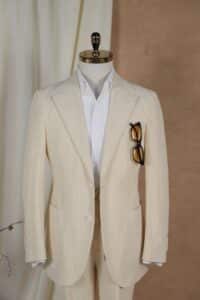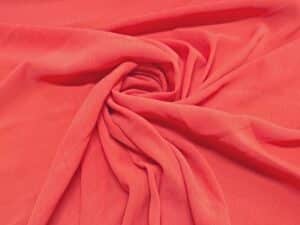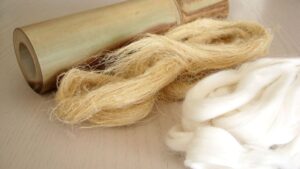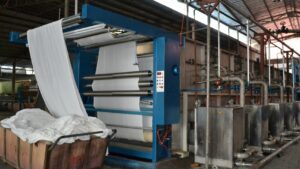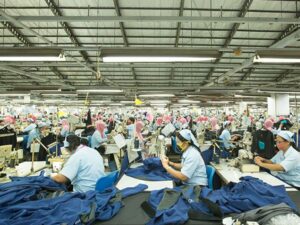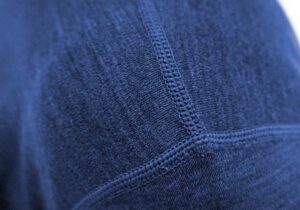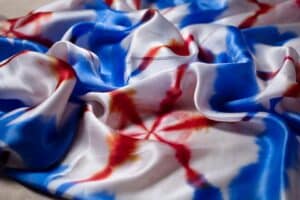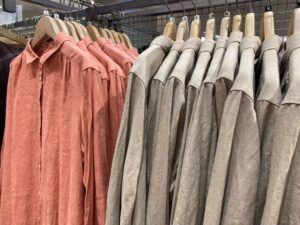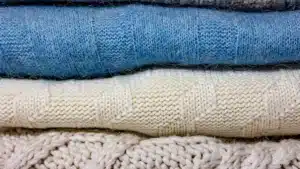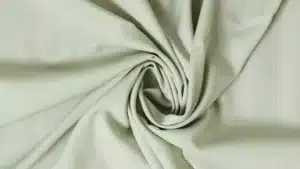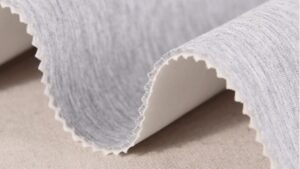
Flannel fabric is a soft material that feels warm and comfy. Its fuzzy surface makes it cozy, perfect for cold weather. Flannel fabric is often made from cotton, wool, or mixed materials, with each type having its own special features.
Flannel fabric is getting more popular, especially for casual clothes. It keeps you warm and lets your skin breathe, making it great for layering in fall and winter. Flannel fabric shirts are must-haves and work for casual or semi-formal looks. Vintage styles are trendy now, so more people love flannel fabric for its classic style.
Key Takeaways
Flannel fabric is soft, cozy, and airy. It’s great for cold weather clothes and home items.
Pick the right flannel for your needs: cotton is soft, wool is warm, and synthetic is cheaper.
Flannel is useful. Use it for shirts, pajamas, bedding, or crafts to make life comfy and stylish.
Choose eco-friendly flannel made from organic cotton or wool. This helps the planet and cuts down waste.
Take care of flannel by washing in cold water. Dry it on low heat to keep it soft and stop shrinking.
What Is Flannel Fabric?

Definition of flannel fabric
Flannel is a soft, medium-thick fabric with a fuzzy feel. This fuzziness comes from a process called napping, which lifts the fibers. The texture makes flannel cozy and great for cold weather. It’s often used in clothes and home items. Flannel comes in many patterns like plaid or solid colors to match different tastes.
In Chinese, we call Flannel as 法兰绒(Fǎ Lán Róng).
Characteristics of flannel
Flannel has special features that make it stand out. Here are its main traits:
Softness: Napping makes flannel super soft and gentle on skin.
Warmth: It holds heat well, keeping you warm in cold weather.
Breathability: Flannel lets air flow, so you don’t overheat.
Durability: It lasts through regular use and washing.
Comfort: Its softness, warmth, and breathability make it very comfy.
Variety: Flannel comes in many weights, textures, and styles for all needs.
These features make flannel useful for clothes and home decor. Use it to stay warm in winter or to make your bedroom cozier. Flannel is both practical and stylish.
Common materials used in flannel
Flannel is made from different materials, each with its own perks:
Cotton: Cotton flannel is light, soft, and breathable. It’s great for shirts, pajamas, and bedding.
Wool: Wool flannel is warm and strong, perfect for jackets and outdoor wear.
Synthetic blends: Synthetic flannel, like polyester or acrylic, is cheap and easy to clean. Mixed flannel combines natural and synthetic fibers for more durability and flexibility.
Cotton and wool are the most loved for their natural feel and usefulness. But synthetic flannel is becoming popular because it’s affordable and varied. Pick the material that fits your needs best, whether it’s cotton’s softness, wool’s warmth, or synthetic’s practicality.
Types of Flannel Fabric
Flannel comes in different types, each with special features. Knowing these types helps you pick the right one for clothes or home use.
Cotton flannel
Cotton flannel is very popular and widely used. It’s made from 100% cotton or cotton blends. This fabric is soft, light, and breathable. People use it for shirts, pajamas, and bedding because it’s comfy and useful. Cotton flannel is great for daily wear and home items, especially in cooler weather.
The need for cotton flannel has grown a lot recently. The flannel market may reach $7.8 billion by 2030. This rise shows more people want casual clothes and cozy home items. Cotton flannel is also eco-friendly, matching the trend for green fabrics, which may be 25% of the market by 2025.
Wool flannel
Wool flannel is warm and strong. It’s thicker than cotton flannel, so it’s good for jackets, pants, and outdoor clothes. This type is perfect for cold places where staying warm matters. Wool flannel feels fancy and adds style to your outfits.
Wool flannel makes up 30% of the market, showing its popularity. Its natural fibers make it eco-friendly, which attracts buyers who care about the environment.
Synthetic flannel
Synthetic flannel is made from materials like polyester or acrylic. It’s a cheaper option compared to natural flannel. This fabric is light, easy to clean, and lasts a long time. People use it for outdoor gear, pet items, and crafts because it’s affordable and useful.
When picking flannel, think about what you need. Cotton flannel is soft and breathable. Wool flannel is warm and stylish. Synthetic flannel is cheap and durable.
Printed vs. solid-colored flannel
When picking flannel, there are two main types: printed and solid-colored. Each type has its own special features for different styles and uses.
Printed flannel comes in many patterns, with plaid being the most famous. Plaid flannel is a classic choice for shirts, jackets, and home items. Its crisscross lines and bright colors give it a timeless look. Other printed designs include floral, geometric, or seasonal patterns. These prints can add fun and personality to your clothes or home. For example, a plaid flannel shirt gives an outdoorsy feel, while floral prints bring a softer, feminine vibe.
Solid-colored flannel is simpler and more basic. It’s great for a clean and neat style. Solid colors are easy to match with other patterns or textures. A solid flannel blanket, for example, pairs well with a patterned bedspread. This type of flannel also works for professional or semi-formal outfits where bold prints might not fit.
When choosing between printed and solid-colored flannel, think about your style and needs. Printed flannel, like plaid, adds charm and character. Solid-colored flannel is versatile and simple. Both types are useful, so pick what suits you best.
How Is Flannel Fabric Used?

Flannel fabric is useful for many things. Its softness, warmth, and strength make it great for clothes, home items, and crafts. Let’s see how flannel fits into everyday life.
Clothing (e.g., shirts, pajamas, jackets)
Flannel is perfect for cold-weather clothes. It feels soft and keeps you warm, making it ideal for winter shirts, jackets, and pajamas. Flannel shirts are very popular because they are cozy and stylish. You can wear them casually or layer them for extra warmth on cold days.
Flannel pajamas are another favorite. They feel gentle on your skin and keep you comfy all night. Flannel pants are great for relaxing at home. For outdoor fun, flannel jackets and sweaters are warm and strong, perfect for camping or hiking.
Home decor (e.g., bedding, blankets, curtains)
Flannel isn’t just for clothes; it also makes your home cozier. Its soft feel is perfect for bedding like sheets, pillowcases, and duvet covers. Flannel bedding keeps you warm on cold nights, making your bed snug and comfy.
Flannel throw blankets add warmth and style to your living room or bedroom. You can place them on a couch or chair for decoration and comfort. Flannel curtains are another great choice. They help keep your home warm and give it a cozy, rustic look.
Use Type | Details |
|---|---|
Cold-weather clothing | Flannel is soft and warm, great for fall and winter wear. |
Outdoor clothing | It’s comfy and keeps moisture away, ideal for camping gear. |
Pajamas and sleepwear | Flannel is soft, making it a top pick for pajamas. |
Home decor | Flannel is used in blankets, curtains, and bedding for its cozy texture. |
Other uses (e.g., crafts, outdoor gear, pet accessories)
Flannel is also great for crafts and other uses. It’s strong and easy to work with, making it perfect for DIY projects like quilts, toys, or holiday decorations.
For outdoor lovers, flannel is useful for gear like sleeping bag liners or picnic blankets. It keeps you warm and dry, making it great for camping trips.
Even pets can enjoy flannel. Pet beds, blankets, or jackets made from flannel keep your furry friends warm and comfy.
When using flannel, think about its special features. Its softness, warmth, and strength make it great for winter clothes, home decor, and creative projects.
A Quick Look at Flannel's History
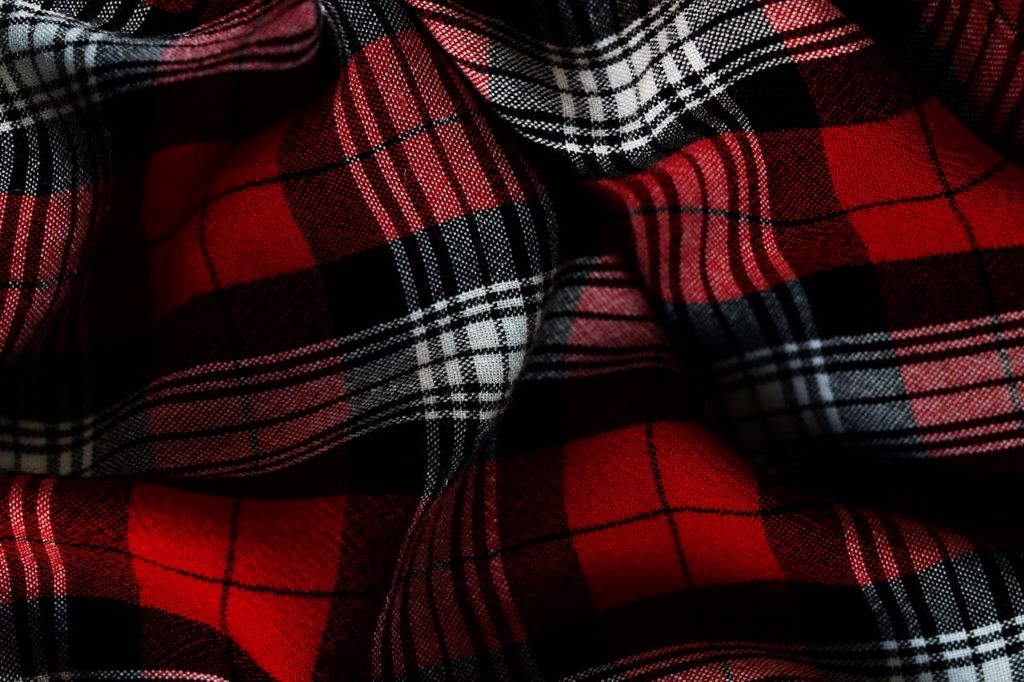
Where flannel started and how it was first used
Flannel began in Wales during the 1500s. Back then, it was called "Welsh cotton" and made from rough wool with a fuzzy surface. By the 1600s, flannel replaced older wool fabrics in Wales. This change helped flannel become a useful and popular material.
Flannel's fuzzy surface traps air, making it warm and dependable. During the Civil War, soldiers wore flannel because it was tough and comfortable in rough conditions.
How flannel changed over the years
Flannel improved a lot over time. In the 1800s, carding mills in Wales made it easier to produce. Mixing wool with synthetic fibers made flannel stronger and less stretchy. Cotton flannel also appeared, offering a softer and lighter option.
In the 1900s, flannel became popular for work clothes because it was strong and warm. Hamilton Carhartt helped make flannel clothing famous in the U.S., making it a key part of American fashion. Over time, flannel moved from workwear to casual clothes and home items.
Flannel's importance today
Flannel is still loved in fashion and culture. Its plaid patterns and rugged look make it a favorite for outdoor wear and casual outfits. In the 1990s, flannel shirts became a symbol of the grunge movement, representing individuality and rebellion.
Flannel is also common in home decor, like blankets and bedding. Its softness and warmth make homes feel cozy. Flannel’s mix of usefulness and style keeps it popular today.
Flannel stands for comfort, practicality, and style, blending old traditions with modern trends.
How Is Flannel Fabric Made?
Flannel fabric is made through steps that make it soft, warm, and strong. Knowing these steps shows why flannel is so useful and comfy.
The weaving process (plain vs. twill weave)
Flannel starts with weaving yarn into fabric. This is done using either a plain weave or a twill weave. Plain weave makes a simple crisscross pattern. It creates light and airy fabric. Twill weave forms slanted lines, making the fabric stronger and textured. Twill is used more often because it lasts longer and feels softer after processing.
The weave type changes how the fabric works:
Plain weave is best for light flannel, like summer shirts.
Twill weave is better for thick flannel, like winter blankets.
After weaving, the fabric is shrunk and prepared for the next steps.
Brushing technique for softness
Brushing makes flannel soft and fuzzy. Fine metal brushes lift the fibers on the fabric’s surface. This gives it a warm, gentle feel and helps trap heat.
Brushing can be done on one or both sides. Double-brushed flannel is extra soft and warm. It’s great for winter clothes and bedding. This step also makes the fabric look cozy and inviting.
Material-specific production differences
How flannel is made depends on its material. Cotton flannel is handled gently to keep it soft and breathable. Wool flannel, being thicker, gets extra treatments to make it strong and warm. Synthetic flannel, like polyester, uses chemicals to copy the softness of natural fabrics.
Here’s a quick look at production details:
Report Features | Details |
|---|---|
Detailed Process Flow | Shows steps, quality checks, and tests. |
Plant Machinery | Lists machines, costs, and suppliers. |
Raw Materials | Explains material types and costs. |
Packaging | Covers packaging materials and suppliers. |
Utility Requirements | Includes energy, water, and worker needs. |
These steps make sure flannel is high-quality, whether for clothes, home items, or crafts.
Environmental Impact of Flannel
Natural materials and their eco-friendliness (cotton, wool)
Cotton and wool are natural and better for the planet. Organic cotton is grown without harmful chemicals or fake fertilizers. This method protects nature and uses less water than regular cotton farming. Wool is biodegradable and renewable. Sheep grow wool every year, so it doesn’t run out.
Why organic cotton is better:
No harmful chemicals or GMOs.
Uses less water.
Produces fewer greenhouse gases.
More people now want eco-friendly fabrics. They like comfy clothes, handmade items, and materials made responsibly. These trends show why natural fibers are a smart choice for flannel.
People want cozy clothes and home items.
Handmade products are becoming trendy.
Eco-friendly and fair materials matter more now.
Problems with synthetic flannel
Synthetic flannel, like polyester or acrylic, harms the environment. It’s made from oil-based materials, which release carbon during production. Washing synthetic fabrics sheds tiny plastics into water, hurting sea life. Though synthetic flannel is strong and cheap, it’s less eco-friendly than natural options.
To help, use less synthetic flannel or pick blends with natural fibers. Recycling synthetic fabrics also reduces waste and saves resources.
Picking greener flannel choices
Choose flannel brands that care about the planet. Look for certifications like GOTS (Global Organic Textile Standard) or OCS (Organic Content Standard). Brands like Toad&Co. and CARPASUS use organic cotton and eco-friendly methods to make great flannel.
Brand | Eco-Friendly Actions | Certifications |
|---|---|---|
Toad&Co. | Uses organic cotton, supports green projects, promotes inclusivity | Bluesign, OEKO-TEX® Standard 100 |
CARPASUS | Organic cotton, natural buttons, small-scale production | N/A |
Taylor Stitch | High-quality materials, eco-focused, long-lasting clothes | N/A |
Caring for Flannel Fabric
Taking care of flannel fabric helps it stay soft and last longer. Follow these easy steps to keep it cozy and in good shape.
Washing tips (e.g., cold water, gentle cycle)
Wash flannel in cold water to stop shrinking or fading. Use a gentle cycle to protect its soft fibers. Harsh washing can ruin the fuzzy surface. Pick a mild detergent without bleach or strong chemicals. These can damage the fabric and change its color.
Wash flannel items alone or with similar fabrics. Avoid mixing with rough clothes like jeans to prevent pilling. Turn flannel inside out before washing to keep it soft and reduce wear.
Tip: Don’t overload the washer. Flannel needs space to clean gently and thoroughly.
Drying and ironing recommendations
Dry flannel on low heat in a dryer. High heat can shrink it or make it stiff. Take it out quickly to avoid wrinkles. If air drying, lay it flat or hang it up. Keep it out of direct sunlight to stop colors from fading.
Iron only if needed. Use a low heat setting to avoid burning the fibers. Always iron the inside to protect the fuzzy surface.
Technique | Recommendation |
|---|---|
Drying | Use low heat in a dryer |
Ironing | Use low heat, iron inside out |
Bleaching | Never use bleach |
Preventing pilling and maintaining softness
Pilling happens when small balls form on the fabric. To stop this, wash gently and avoid rough clothes. Use a little fabric softener to keep it smooth. After washing, lightly brush the surface with a fabric comb to remove pills.
Store flannel in a cool, dry place. Fold it neatly to avoid creases. Taking care of your flannel keeps it soft, warm, and ready to use.
Note: Regular care keeps flannel looking and feeling great. Treat it well, and it will stay comfy for a long time.
Flannel fabric is soft, strong, and useful for many things. Its cozy feel makes it loved by kids and adults. It also helps keep your body at a good temperature all year. Flannel works well for bedding, shirts, or outdoor clothes.
Think about the environment when picking flannel. Choose natural options like organic cotton or wool. These materials are better for the planet and last longer.
Here’s why flannel is a great choice:
Feature | Details |
|---|---|
Softness | Flannel feels gentle, perfect for kids and adults. |
Usefulness | It lets air flow, keeping you comfy in any season. |
Strength | Flannel stays strong after washing, making it last longer. |
Eco-Friendly | Natural flannel helps keep you warm and dry in cold weather. |
Budget-Friendly | Flannel is affordable and works for many designs. |
Try flannel for your clothes and home. Picking eco-friendly flannel lets you enjoy its benefits while helping the Earth. 🌱
FAQ
What makes flannel different from other fabrics?
Flannel stands out because of its fuzzy texture created by brushing. This process makes it softer and warmer than regular woven fabrics. Its breathability also sets it apart, ensuring comfort in both cold and mild weather.
Can flannel shrink after washing?
Yes, flannel can shrink if washed in hot water or dried on high heat. To prevent this, use cold water and a gentle cycle. Air drying or low heat in the dryer helps maintain its size and softness.
Is flannel suitable for summer wear?
Lightweight cotton flannel works well for summer. It allows air to flow, keeping you cool. Wool or heavy flannel is better for colder seasons. Choose the right type based on the weather and your needs.
How do I know if flannel is eco-friendly?
Look for certifications like GOTS or OEKO-TEX® on the label. These ensure the fabric meets environmental standards. Natural materials like organic cotton or wool are more sustainable than synthetic blends.
Can flannel be used for DIY projects?
Absolutely! Flannel is easy to cut and sew, making it ideal for crafts like quilts, toys, or decorations. Its durability and softness make it a favorite for creative projects.

